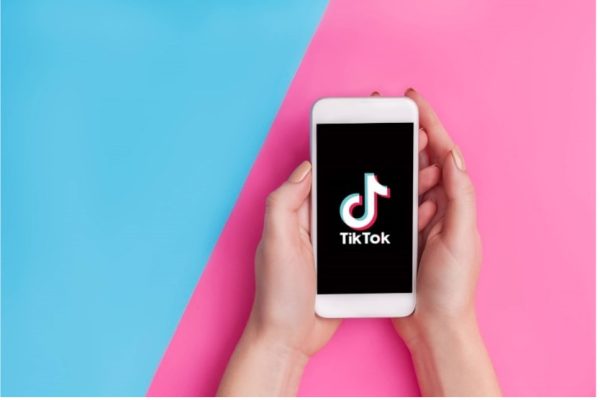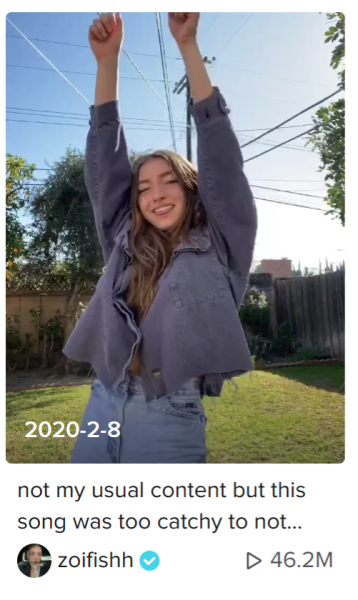Our PR Director, Michelle Smytheman, is passionate about helping emerging professionals in the communications industry and teaches at the University of the Sunshine Coast. As part of an assessment task this year, there have been some excellent blogs written by first-year students about emerging business trends. We are proud to share their work.
By Georgia Lundie-Jenkins
 How do you find new music? Do you listen to different radio stations on your morning commute or maybe scour the endless “Made For You” playlists on Spotify? On average, a person listens to approximately 961 hours and 10 minutes of music per year. As a staple of life in the 21st century, individuals are embracing new ways of finding new music, sometimes without even realising it. Let me explain.
How do you find new music? Do you listen to different radio stations on your morning commute or maybe scour the endless “Made For You” playlists on Spotify? On average, a person listens to approximately 961 hours and 10 minutes of music per year. As a staple of life in the 21st century, individuals are embracing new ways of finding new music, sometimes without even realising it. Let me explain.
The world was introduced to TikTok in September of 2016. Similar to other apps such as Vine, TikTok allows users to share short videos online from a range of different genres. Featuring content ranging from gaming clips to dancing videos and everything in between, TikTok amassed 1.46 Billion users by mid-2022 which is a growth of over 500 million since mid-2021. With a user base from all different countries, viral videos have the potential to be marketed across the world. It is safe to say that TikTok has become one of the fastest growing apps in history and is one of the largest reaching platforms of all time. With statistics like this, it is no wonder that mainstream artists are beginning to insert themselves into the TikTok scene.
 Unlike any other platform on the market, TikTok has an ability to make something go viral within a matter of minutes. Smaller artists such as Benee and Mae Stephens as well as bigger artists such as Megan Trainer, Lil Naz X and Doja Cat have seen this happen firsthand. But how does the song get to the point of going viral?
Unlike any other platform on the market, TikTok has an ability to make something go viral within a matter of minutes. Smaller artists such as Benee and Mae Stephens as well as bigger artists such as Megan Trainer, Lil Naz X and Doja Cat have seen this happen firsthand. But how does the song get to the point of going viral?
The most common method for reaching TikTok virality is through the creation of trends, typically dance trends. If we use Benee as an example, her single ‘Supalonely’ was first released in November of 2019. For a young 19-year-old singer from New Zealand, the song seemed to be getting a good reception from listeners the months following her initial release. This changed dramatically when popular dance TikToker, Zoi Lerma, released a TikTok dance to the song in March of 2020. The original video by Zoi Lerma has amassed 46.2 million views with users worldwide learning and recreating the dance. This pattern is similar to the experiences of many others within the music industry and has led some management teams to pay influencers to create these dances to make the viral growth in the popularity of a song seem more organic.
Some singers are also inviting TikTok influencers to listen to new music prior to the official release to help with promotion, as well as collaborating with other users to get their “brand” out there. Snippets of unreleased songs are also usually uploaded as sounds so that everyday users can help build up the hype. These elements show how marketing teams have many different moving parts all intertwined in getting a song to go viral whilst making it seem somewhat effortless. Whilst the introduction of TikTok into marketing has only been popular for a relatively short period, the theoretical concept behind this form of marketing has been around for a lot longer.
First introduced in 1988, micromarketing is a concept where instead of targeting the entire market for your product and services, you narrow it down to a smaller group within a niche market. This is done by distinguishing a certain characteristic whether that be age, gender, location etc and creating more personalised and tailored marketing messages to this target group. In the case of TikTok Marketing, the music industry targets their specific audience, primarily younger demographics (15-25), by creating content that resonates with them such as these viral dances, as well as collaborating with other influencers who have greater appeal to this audience specifically. Each of these steps are done to increase music sales and to drive engagement.
Experts have confirmed that social media has created the perfect opportunity for implementation of micromarketing techniques back into traditional marketing. This research also confirmed just how effective this technique is in not only improving number sales but also retention of consumers. With all these things considered, I am sure it won’t be long before we see these types of techniques trending on other social media platforms, similarly to what we have witnessed on TikTok.
The world is changing. And when we experience change, it is important to adapt, which is exactly what the Music Industry is doing. Whilst the marketing concepts being utilised are by no means new, the platforms being used are. Apps such as TikTok are creating a new space where finding new music can be done just by scrolling.



